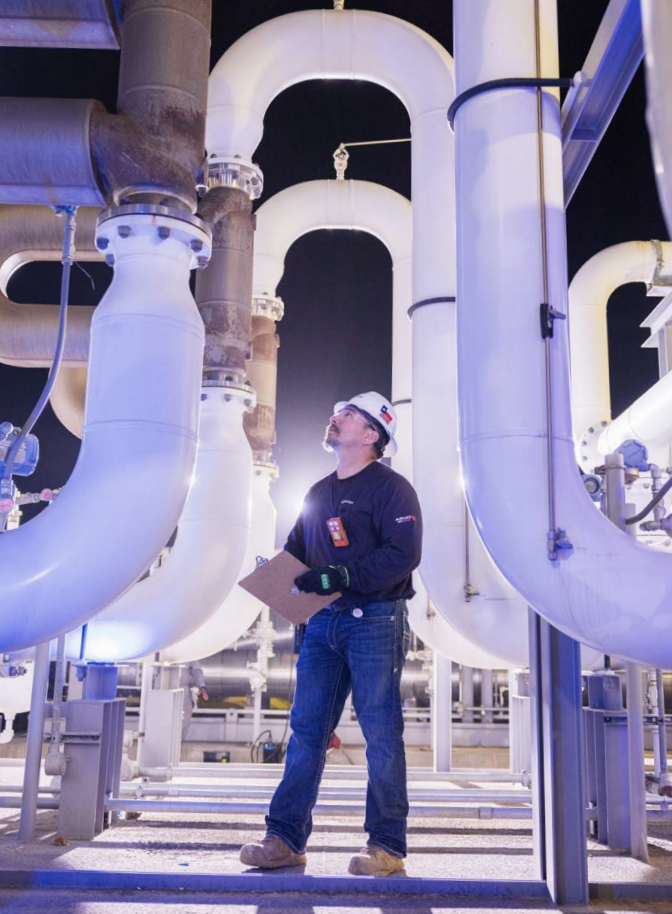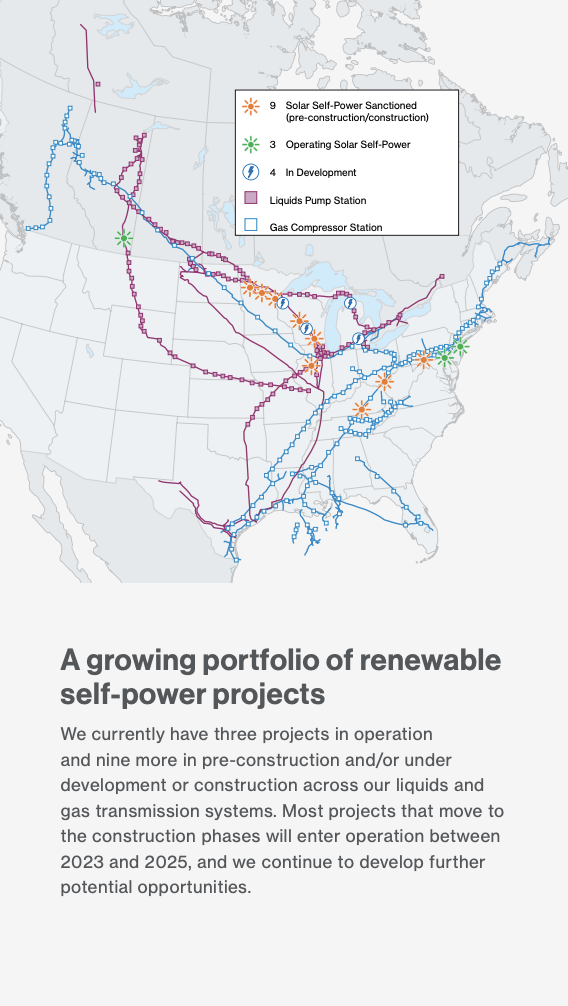Pathways to Net Zero
Key strategies for meeting our emissions reduction targets
Originally published in Enbridge's 2022 Sustainability Report
Enbridge continues to advance progress towards our emissions reduction goals. To maintain strong progress and ensure that the assumptions and analysis underpinning our plans are rigorous, we refine our models and projections over time, remaining aware of contextual factors that shape our business environment, from technological advances to policy changes.
In 2022, we fully integrated our emissions reduction goals within our business unit budgeting and long-range forecasting. As a result, our slate of emissions reduction projects are now prioritized from 2023 through 2026.
We use a marginal abatement cost curve to guide our investment in emissions reduction initiatives, assessing which projects will most efficiently deliver the results required to meet our 2030 emissions intensity reduction target. Enbridge leaders agreed in 2021 on the principles and frameworks that would guide our capital allocation choices. In 2022, our business units took further steps to implement these approaches and align employee and executive compensation around executing on these GHG emissions reduction projects each year.
The pathways shown remain the most current forecast of our route to net zero; carbon offsets and credits are still estimated to represent about one-quarter of our net-zero strategy. We are in the process of updating the models and forecasts that underpin these four pathways and expect to complete this analysis throughout 2023.
Our net-zero strategy focuses on four key pathways:
- Modernization and innovation to increase efficiency and reduce the operational emissions of existing infrastructure
- Decarbonizing the energy we use by procuring low-carbon power and self-powering our assets with renewable energy
- Investing in renewables and lower-carbon infrastructure
- Balancing residual emissions through selective investments of carbon offset credits generated by nature-based solutions
Investing in tomorrow’s energy
We achieved substantial progress on the four key pathways that ground our net-zero strategy. We presented an overview of the relative contribution we expect each pathway will make, and in this section, we describe the specific activities and investments that are delivering emissions reductions in each area.
Modernization and innovation
We continue to modernize our existing assets and use innovative practices to enhance efficiency and reduce GHG emissions across our operations. In 2022, our GTM business advanced its modernization program, replacing older compressor units in the gas transmission system with newer, more efficient equipment. In October, we put a new compressor into service at our Bechtelsville, PA station. We expect to complete two further replacements in 2023, and an additional six through the end of 2026. In addition to enhancing the reliability of the system overall, each replaced compressor is expected to deliver GHG emissions reduction of about 25% relative to the older models. Moreover, newer compressors can be operated by advanced controls that give us more flexibility in how we allocate compression power— meaning that they’re more efficient individually and give us more opportunities to optimize the efficiency of the wider system.
Our LP business unit continues to deepen its focus on reducing electricity consumption by optimizing system operations and upgrading equipment. Over the past few years, we have demonstrated the efficacy of allocating larger volumes of crude oil to more energy efficient pipelines and rightsizing pumps and equipment based on flow rates to improve efficiency. We also use a drag-reducing agent to reduce pipeline fluid friction; this allows us to move fluid through pipelines using less energy, and in some cases even bypass some pump stations altogether. We are also expanding the application of an energy optimization system that uses machine learning to fine-tune the pump combinations, the operation of variable-frequency drives on pumping units, and improving overall coordination—all to achieve maximum efficiency across our system. Having established the efficacy of these strategies on parts of the system, we worked to apply them more broadly across our system, scaling the efficiency gains. These LP initiatives are estimated to reduce over 100,000 tonnes of CO2e emissions annually.
Procurement of low-carbon electricity
We look for opportunities to increase power supply from less emissions intensive sources, including renewables. This requires us to engage actively with utility providers across multiple jurisdictions, signaling our interest in low-carbon alternatives and encouraging them to make the changes necessary to green their grids—whether that means shifting from coal-fired power to natural gas, or making other adjustments to increase the availability of renewables in their power mix. We are working collaboratively with our utilities on opportunities to accelerate the pace of decarbonization to achieve both our and their emissions reduction goals, including procuring low- and zero-carbon electricity. As an example, in 2022, in Illinois, we secured a zeroemission source for our operations throughout that state.
Self-power
As we provide conventional and lower-carbon energy to consumers, we’re seeking innovative and efficient ways to power our assets and operations. To date, we have entered three solar projects into operation and are advancing nine others in the United States to develop low-emission electricity for our pump and compressor stations. Collectively, these 12 projects (either in operation or preconstruction) will provide more than 102 megawatts of clean energy capacity, from Wisconsin to Alberta to Kentucky to Minnesota. That’s the equivalent of powering 23,700 households with lowemission electricity.
Enbridge is committed to collaborating with our utilities to procure low-emission power and to accelerating that pace of decarbonization through various initiatives, including advancing solar self-power projects.
April Moon
Vice President, LP Asset Performance, Power and Emissions



